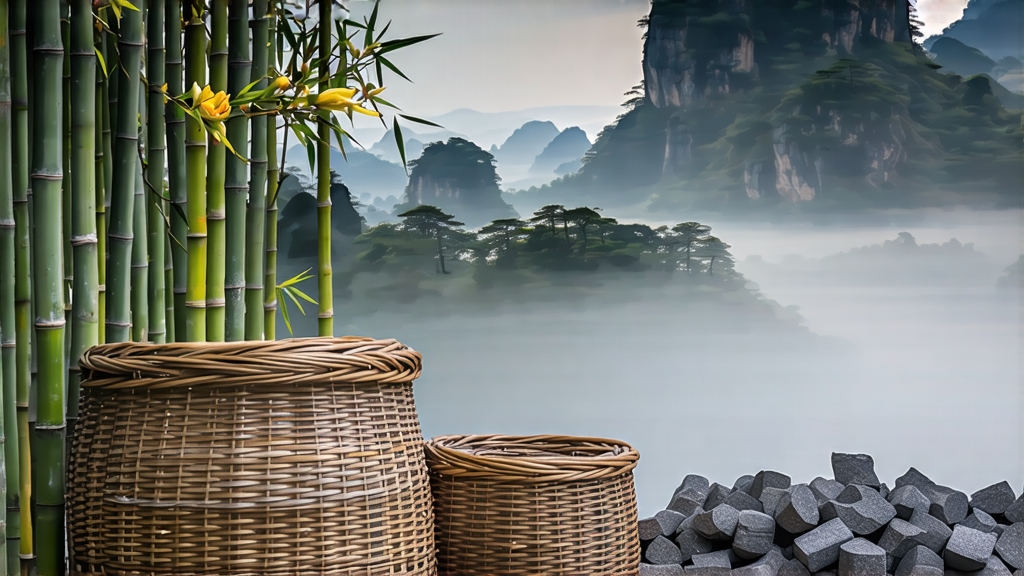
Among the six major chromatic families of Chinese tea, yellow tea is the rarest and most enigmatic; even within China, many drinkers pass their entire lives without encountering an authentic cup. Of the mere handful of yellow teas that survive, Huoshan Huangya—literally “Yellow Buds of Huoshan”—stands as the most storied and refined. Grown on the cloud-laced northern slopes of the Dabie Mountains in western Anhui province, this tea once traveled in silk-lined chests to the Forbidden City, where the Qianlong Emperor declared it “the gold that can be drunk.” Today, fewer than three thousand kilograms of true Huoshan Huangya are produced each spring, making it a living relic that whispers of Ming-dynasty gardens, secretive “menhuang” fermenting rooms, and the slow, patient craftspeople who still believe that time itself is an ingredient.
Historical tapestry
The first written record appears in 1602, when the local gazetteer of Huoshan County noted that “monks on the Moon-Watching Terrace pick one bud at dawn, wrap it in white cotton, and by dusk the leaf turns the color of millet.” By the late Qing, the tea had become so coveted that county magistrates accepted it in lieu of silver tax; caravans carried it over the Dabie passes to the Huáng Hé, then by barge to Beijing. When the last emperor abdicated in 1912, the tribute system collapsed, and Huangya’s intricate craft nearly vanished during the war-torn decades that followed. A handful of families in the villages of Foziling and Taiyanghe secretly kept seed gardens alive, wrapping tiny batches in rice paper and storing them inside camphorwood chests. In 1972, Premier Zhou Enlai chose a specially fired lot of Huangya to toast President Nixon in the Great Hall of the People, an event that quietly revived national interest and led to the resumption of commercial production in 1976.
Terroir and cultivar
Huoshan County lies at 31° N, where the Dabie range funnels cool, moisture-laden air from the Yangtze basin. Spring dawns are fog-locked, reducing ultraviolet exposure and prompting the tea bushes—predominantly the small-leaf “Huoshan early bud” clone—to synthesize extra theanine and soluble sugars. The soil is a porous granitic loam, slightly acidic (pH 5.2–5.7), laced with mica that reflects heat back to the low bushes. Such conditions create the trademark “three yellows”: yellow-green fresh leaf, canary-colored dry tea, and topaz-hued liquor.
Plucking ritual
The harvest window opens around Qingming (early April) and closes before Grain Rain, barely fifteen days later. Only the single unopened bud plus the first unfolding leaf are taken, a standard known as “one flag, one spear.” Experienced pickers work barefoot so they can feel the mountain’s chill through the soles; they claim the leaf is most serene before the earth warms. Baskets are woven from fresh bamboo strips precisely two fists wide, allowing air to circulate and preventing the buds from suffocating.
The secret menhuang process
What transmutes a green tea into a yellow one is the elusive step called menhuang—“sealing yellow.” Within two hours of plucking, the buds are spread on bamboo trays and withered for 30–40 minutes in diffuse mountain light. They are then pan-fired at 160 °C for three minutes, a shock that kills the grass-green enzymes while preserving a faint heartbeat of oxidation. Immediately after firing, the still-hot leaf is piled into velvet-lined bamboo cylinders (historically, imperial workshops used yellow satin) and left to stew in its own residual warmth. During the next 4–6 hours, the pile is turned every 20 minutes; the internal temperature hovers at 38 °C, nudging the chlorophyll to degrade into pheophytin and coaxing a gentle Maillard bouquet reminiscent of toasted pumpkin seed. A second, lower-temperature firing (120 °C) fixes the new color and flavor, after which the leaf is baked over charcoal embers for a final 20 minutes. The entire cycle demands at least 72 hours—three times longer than conventional green tea—yet the leaf loses only 28 % of its weight, concentrating amino acids and forming the signature downy golden coat.
Grades and appearance